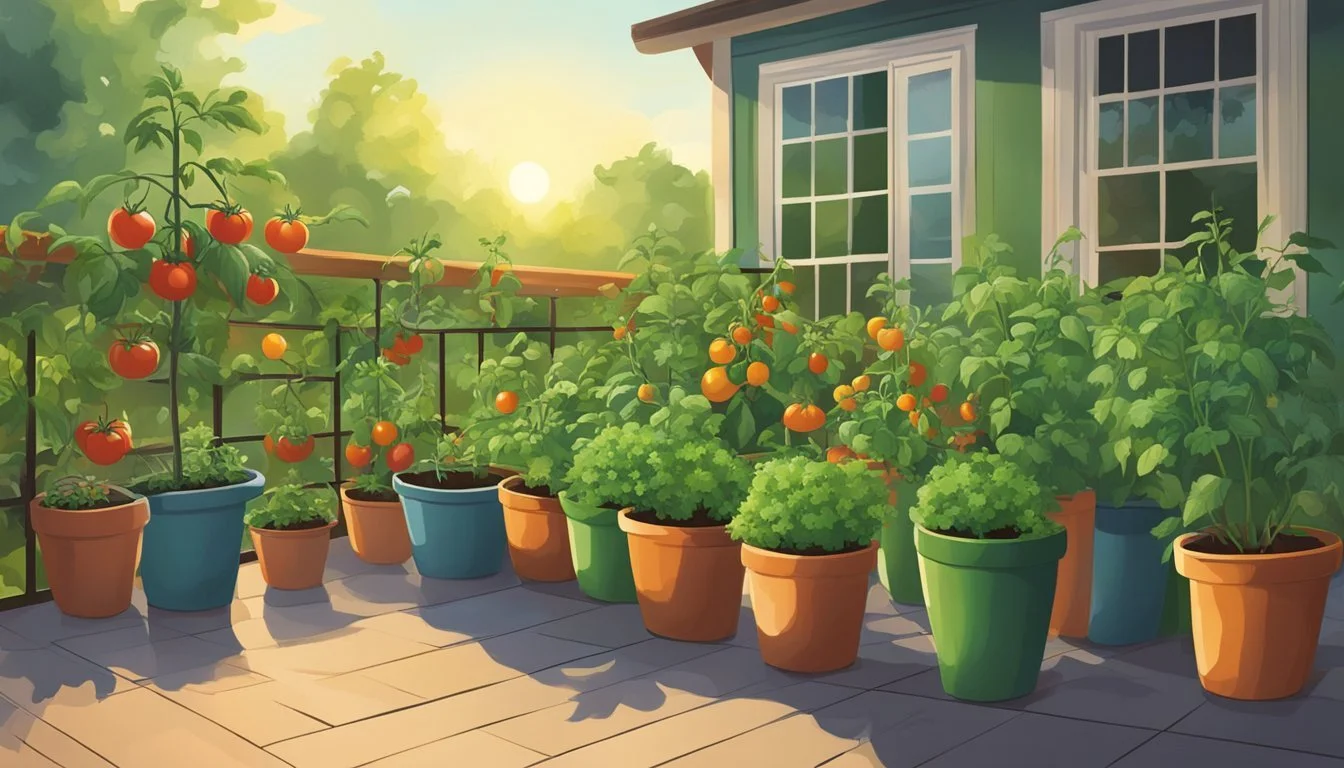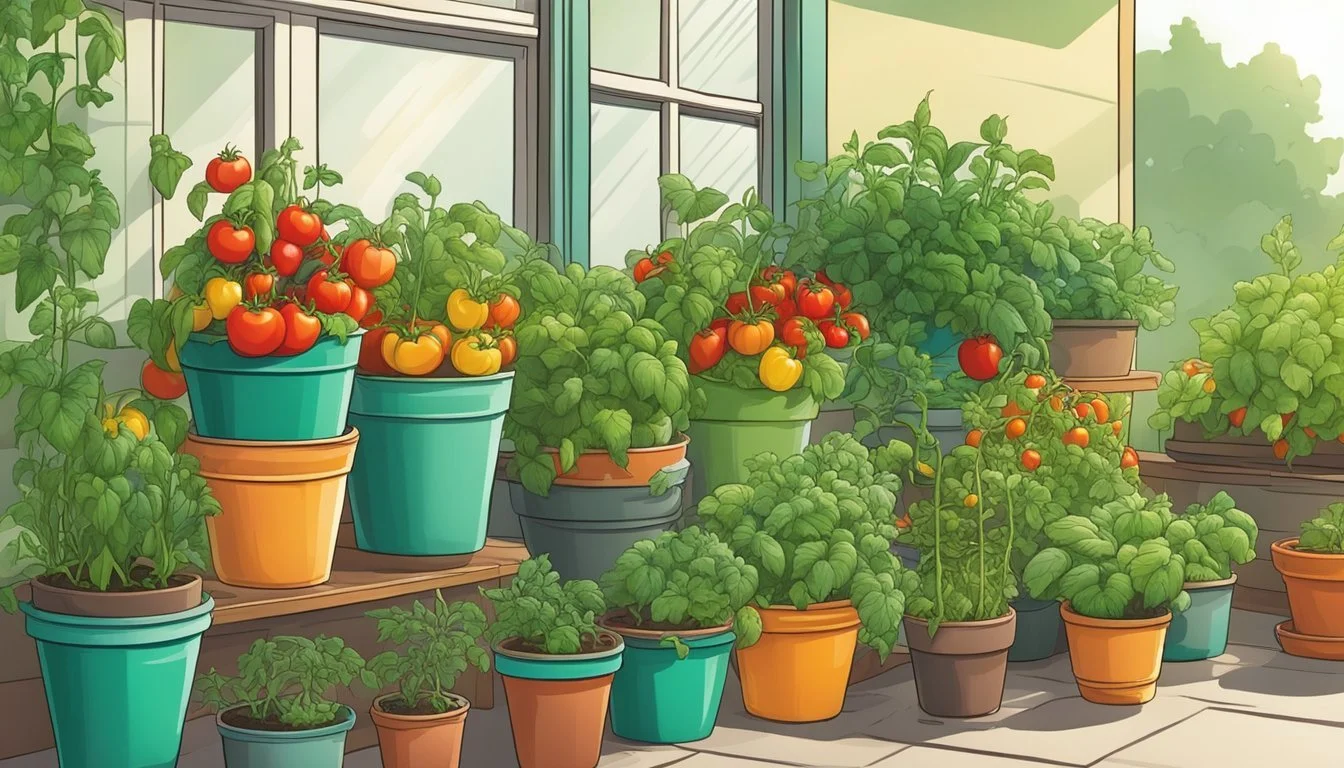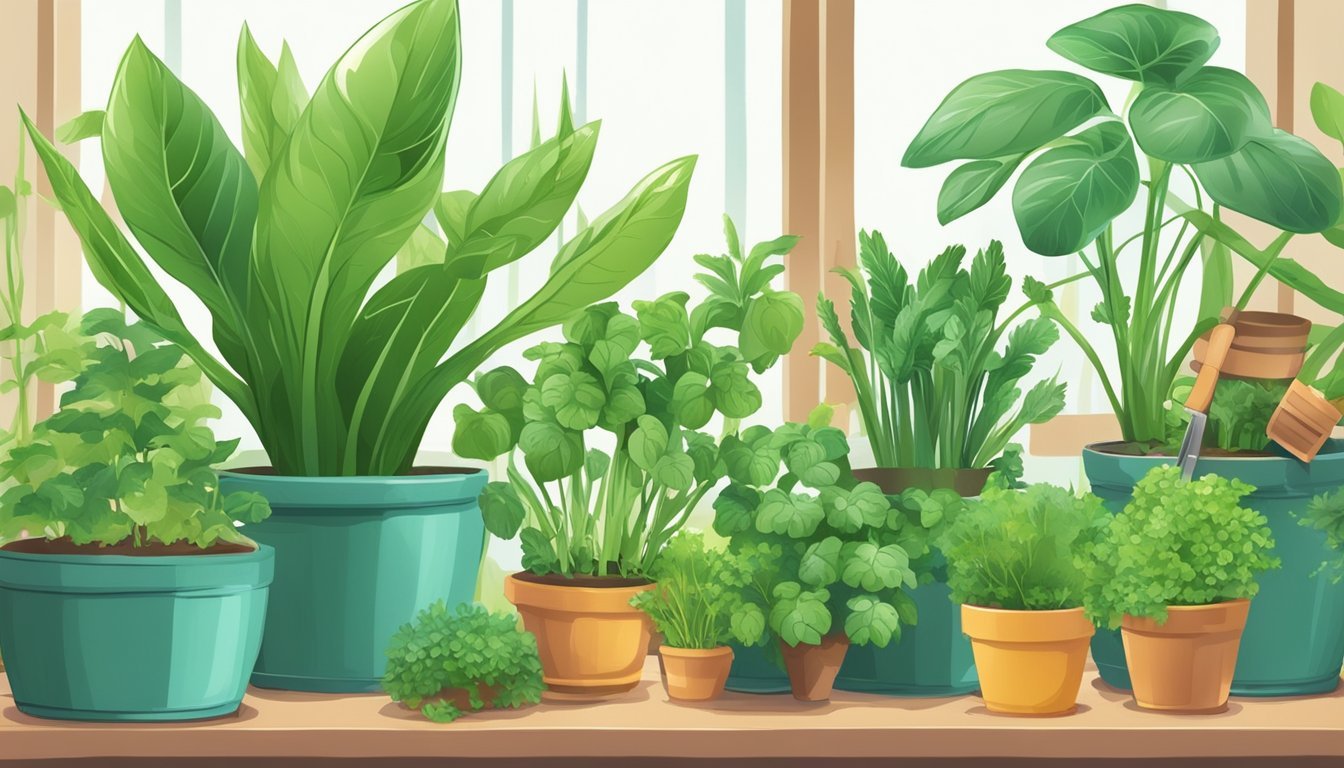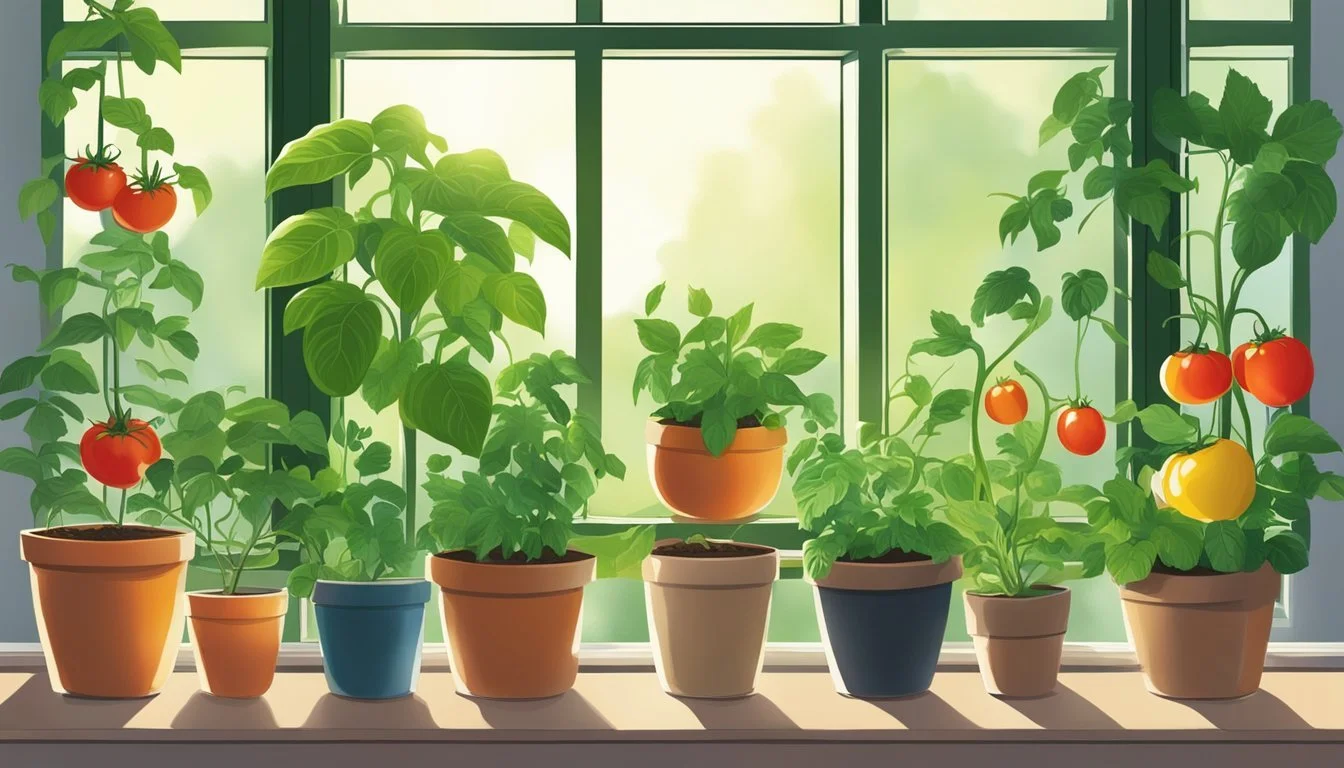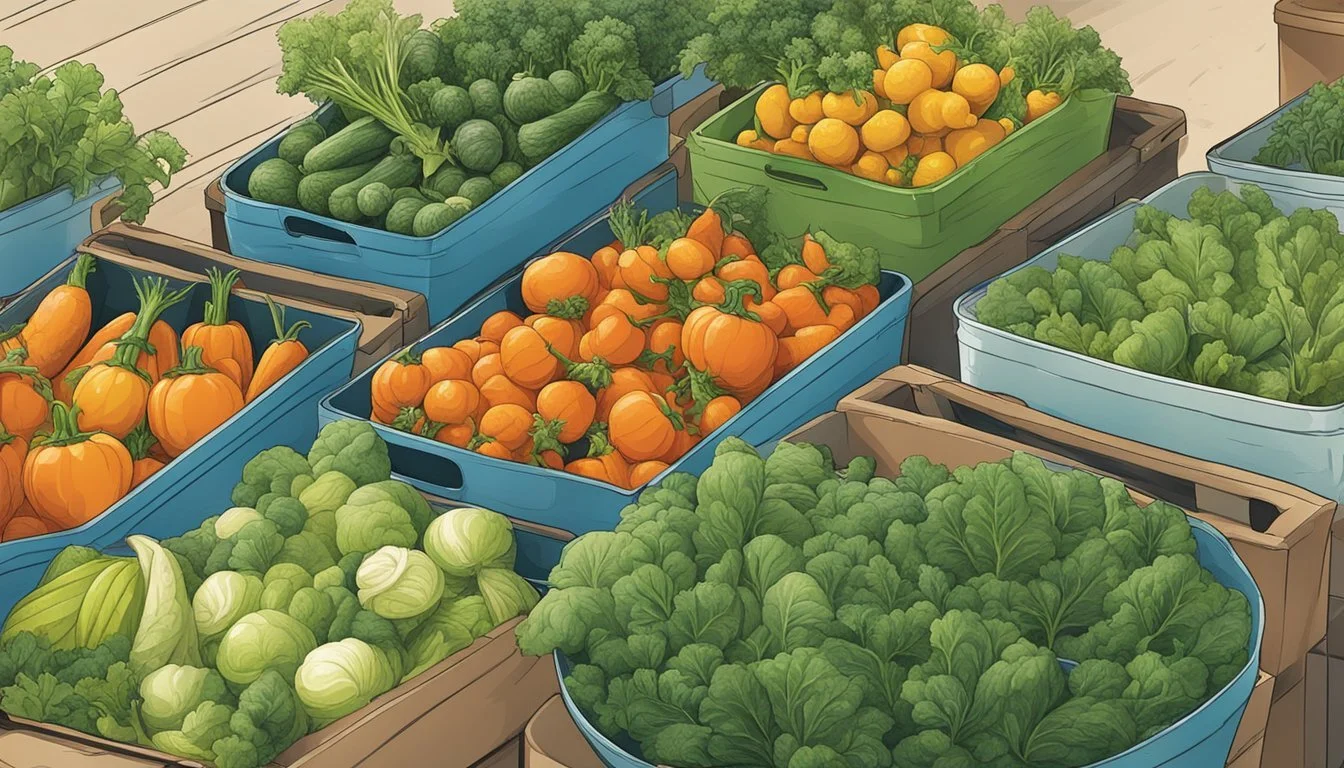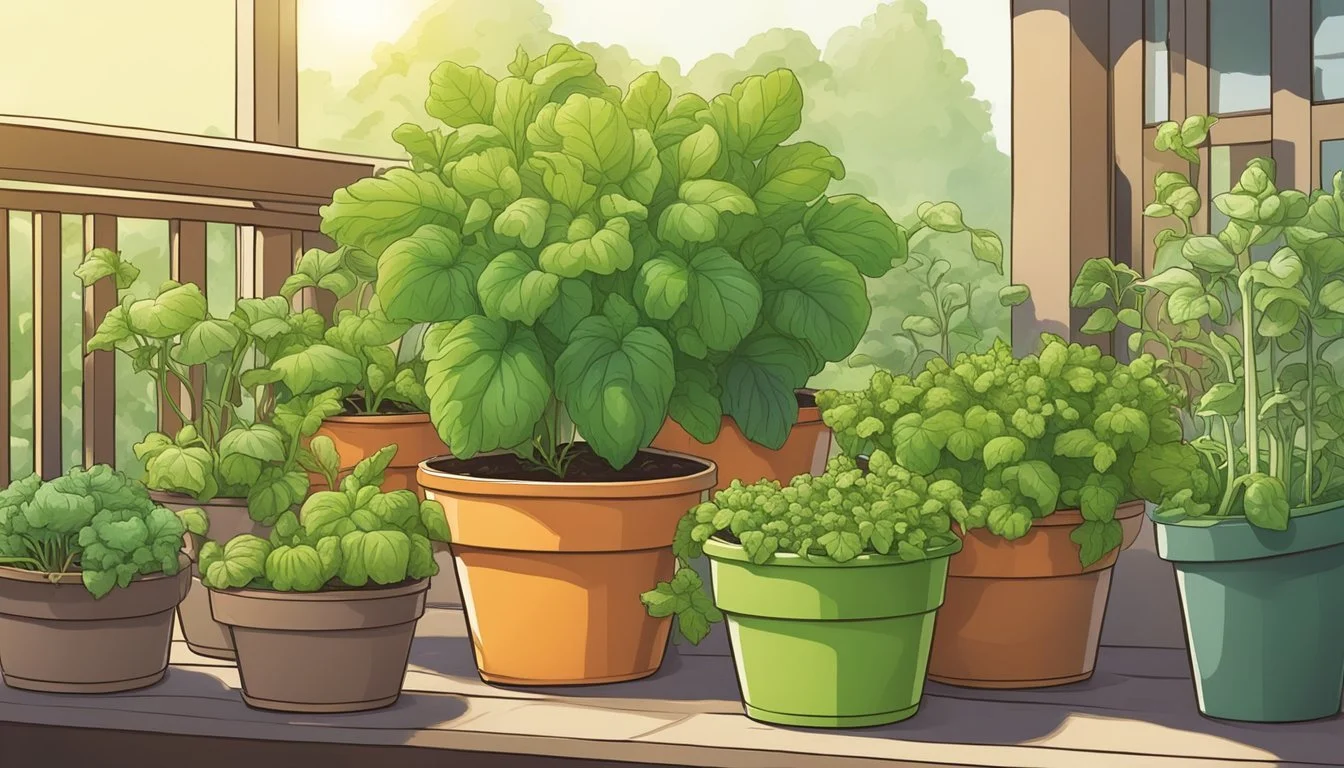Easy Vegetables to Grow in Pots
A Guide for Urban Gardeners
Container gardening is a versatile and accessible way for beginners to start their produce garden with minimal space. Growing vegetables in pots is not only convenient for those with limited outdoor space, such as apartment balconies or small patios, but it also allows for better control over the growing environment. Vegetables such as tomatoes, peppers, and radishes are among the easiest to cultivate in containers, offering a satisfying entry point for novice gardeners.
The key to successful container gardening lies in understanding the specific needs of each vegetable. Easy-to-grow options typically require less space and are more forgiving in terms of care. For instance, some vegetables thrive with consistent watering and good potting soil, while others demand ample sunlight. Beginners can gain confidence as they learn simple gardening techniques through the immediacy of container gardening.
Furthermore, vegetables grown in pots can be less prone to soil-borne diseases and have fewer issues with weeds, making the experience more manageable for those just starting. With a range of suitable varieties available, container gardening empowers individuals to produce fresh vegetables, regardless of their garden size, enhancing both their cooking ingredients and the joy of gardening.
Choosing the Right Containers
Selecting the appropriate container is a crucial step in setting up a successful pot-based vegetable garden. Gardeners must consider the material, size, and good drainage capacity to foster healthy plant growth whether on a balcony, patio, or backyard.
Container Types and Materials
When it comes to containers, there are various types to choose from, each with its benefits. Common materials include:
Plastic pots: Lightweight and cost-effective, ideal for moving around.
Clay or terracotta: Porous, which helps with soil aeration, but can dry out quickly.
Fabric pots: Provide good drainage and air circulation, leading to healthy root growth.
Wooden containers: Rustic and sturdy, yet may require lining to prevent rot.
Metal pots: Durable, though they can heat up quickly, which might affect the root zone.
Each material has implications for heat retention, weight, and durability. A gardener should select a material based on the specific needs of their plants and the environmental conditions of their garden space.
Container Gardening Size and Depth Requirements
Choosing the correct size and depth for a container is dependent on the vegetable being grown:
Shallow Containers: Suitable for other salad greens and herbs, require at least 6-12 inches of soil depth.
Medium Containers: For vegetables like bush beans and strawberries, a depth of 12-18 inches is recommended.
Deep Containers: Essential for root vegetables, tomatoes, and peppers, with a minimum depth of 18-24 inches.
The container size must accommodate the root system of the vegetables planted. Inadequate space can hinder growth and reduce yield.
Importance of Drainage Holes
Adequate drainage is vital for preventing root rot and other water-related issues:
Drainage Holes: Should be present at the bottom of every pot to allow excess water to flow out.
Additional Measures: Layering gravel or non-degradable materials can hinder water flow. It is better to use a soil mix that ensures proper drainage.
Whether a container is placed on a balcony, patio, or in a backyard, one must ensure that it has sufficient drainage to keep plants healthy. Drainage holes are a simple yet essential feature for any pot or container gardener.
Container Vegetable Garden Ideas
Growing your favorite vegetables in pots offers a flexible gardening solution, especially in small spaces. Choosing the right vegetables to grow in pots can ensure a bountiful harvest right from your balcony or patio.
Tomatoes and Peppers
Tomatoes and peppers can thrive in a vegetable container garden because of their adaptability and relatively compact growing habits. To get the best out of a tomato plant, remember that they require ample sunlight and a sturdy pot to support their weight as they grow. Cherry tomatoes and bush varieties are particularly suited for containers. Peppers, including both sweet and hot varieties, also grow well in pots, benefiting from the same warm conditions tomatoes enjoy.
Leafy Greens and Salads
Short-rooted leafy greens and salad vegetables take well as container plants. Lettuce, spinach, kale, arugula, and chard can be harvested on a cut-and-come-again basis, which adds to their appeal for pot growing. They prefer cooler weather, making them excellent choices for early spring and fall. These greens generally need at least 4-6 hours of sunlight and regular watering to thrive.
Root Vegetables and Onions
Root vegetables such as radishes, beets, and carrots, along with onions and green onions, are suitable for deeper pots. Their subterranean growth requires a loose, well-draining soil mix and adequate space for root development. Radishes are particularly easy for beginners as they are fast-growing; many varieties are ready to harvest in less than a month.
Vining Plants, Legumes, and Bush Beans
Beans and peas include climbing varieties like snow peas and Little Marvel, and bush types like bush beans. They are perfect for vertical gardening, allowing for efficient use of space and ease of harvest. Legumes enrich the soil with nitrogen, aiding in the growth of future plants in the same container. For vining plants such as cucumbers and zucchini, ensure to provide support structures like trellises or stakes.
Soil and Composting
The health of potted vegetables begins with choosing the right soil mix, complemented by the integration of compost and vital nutrients to ensure optimal growth.
For container gardening, selecting an appropriate organic potting mix is essential. This mix should be lightweight and provide excellent drainage to prevent waterlogging. A quality soil mix typically includes peat moss, pine bark, and perlite or vermiculite. The ideal soil mix should also promote moist soil conditions that are neither too wet nor too dry, creating a balance that vegetables need to thrive.
Incorporating compost into the potting mix introduces essential nutrients and can improve soil structure. While one can use homemade compost made from kitchen scraps and leaves, commercially available organic compost is also an option. Compost is rich in nitrogen, an important nutrient for plant growth. The addition of compost ensures a slow release of nutrients, which is beneficial for long-term vegetable growth. Here's how to incorporate compost:
Mix compost with the potting soil at a ratio of 1:4 (1 part compost to 4 parts soil).
Replenish nutrients by adding a thin layer of compost to the top of the soil every few months.
By ensuring a harmonious balance of well-chosen soil and compost, vegetables in pots have the potential to grow vigorously and healthily.
Light and Temperature
Managing light and temperature is crucial for the successful growth of vegetables in pots. They require sufficient sunlight to flourish and an understanding of temperature to manage seasonal changes effectively.
Sunlight Requirements
Most vegetables need full sun to produce bountifully. Full sun typically means at least 6 to 8 hours of direct sunlight per day. However, some can tolerate or even prefer partial shade. For instance:
Tomatoes and sweet peppers thrive in full sun.
Lettuce and greens often prefer partial shade to avoid wilting or burning.
It's essential to adjust the position of pots to meet the sunlight needs of each vegetable, considering the shifting angles of the sun across seasons.
Adapting Container Plants to Seasons and Weather
Vegetables in pots need protection from extreme temperatures and the changing conditions of seasons:
Season Action Fall Begin to move sensitive plants indoors or to sheltered areas to extend the growing season Winter Ensure winter-hardy varieties are chosen, and frost-tolerant plants are appropriately insulated.
Adaptation involves knowledge of the local climate zone and understanding that a pot's soil temperature can fluctuate more than ground soil, affecting root health and growth. Each vegetable has a zone indicating the temperature range it grows best. Gardeners must be vigilant about frost, which can damage or kill plants, and protect insulation or by relocating pots indoors during cold snaps.
Watering and Maintenance
Effective watering and maintenance are critical for the success of growing vegetables in pots. Potted vegetables require consistent moisture and structural support to thrive and yield a good harvest.
Proper irrigation is essential for plants to absorb nutrients and grow. Vegetables in containers can be watered using a drip system for steady moisture or a watering can for a more hands-on approach. It is crucial to direct the water to the base of the plants to ensure that roots receive adequate hydration.
To prevent overwatering, one should check the pot's moisture level before watering; the top inch of soil should be dry to the touch. Pots must have drainage holes to allow excess water to escape, which helps prevent root rot and other water-related diseases.
Regular pruning of dead or yellowing leaves helps to reduce the risk of disease and pest infestation. For vining vegetables like tomatoes, support structures such as a trellis or tomato cage are necessary to keep the plants upright and aerated, which encourages a healthier growth habit and helps roots anchor more deeply within the container.
Growing Tips and Tricks
Growing vegetables in pots requires strategic planning to maximize yield. This section explores essential methods to help gardeners thrive in limited space, utilize vertical structures, and select optimal seed varieties.
Maximizing Limited Space
Gardeners with limited space can opt for determinate varieties of vegetables, which grow to a compact size and are ideal for container gardening. Smaller varieties of vegetables are also suitable as they do not overgrow their containers. Using pots, one can arrange their plants in rows or groupings to make efficient use of space.
Using Vertical Gardening
Vertical gardening is a technique that enables gardeners to grow upwards rather than outwards, which is particularly beneficial for crops like pole beans. These plants can climb trellises or poles, making them perfect for vertical setups. Additionally, hanging baskets can be utilized for smaller, trailing plants, adding another layer to the garden without consuming precious floor space.
Choosing the Right Seed Varieties
When selecting seed varieties for pot gardening, it is crucial to consider bush varieties and other plants that are well-adapted to confined spaces. These seeds (how long do seeds last?) are bred to flourish in pots, often requiring less room to spread their roots and grow. Pole varieties are also excellent for pots but will need support structures such as stakes or cages to climb on. Gardeners should focus on choosing the right seed variety that matches their gardening style and space limitations.
Harvesting and Storage
Harvesting vegetables at the right moment ensures maximum flavor, while proper storage is key to preserving quality after picking.
When to Harvest for Peak Flavor
Lettuce: Best picked in the morning when the leaves are crispest. Once the center of the plant grows tall, harvest immediately to avoid bitterness.
Radishes (e.g., French Breakfast): They are ready when their roots are approximately one inch in diameter. Radishes should have a crisp texture and peppery flavor.
Snap Beans (e.g., Blue Lake, Provider): Harvest when the pods are firm and snap easily. They should be picked before the seeds inside form bumps in the pods.
Storing Vegetables Effectively
Lettuce: Store in the refrigerator in a plastic bag wrapped with paper towels to absorb excess moisture. Use within one week for best quality.
Radishes (e.g., Easter Egg): Remove the tops and store in athem plastic bag in the refrigerator's crisper drawer. They can keep for about a week.
Snap Beans: Refrigerate in a plastic bag and consume within a week for the best crunch and taste. They may also be blanched and frozen for longer storage.
Planning Your Container Garden
Proper planning is crucial for a successful container garden. It involves understanding spatial dynamics and the timing of plant growth, which leads to bountiful harvests and an aesthetically pleasing garden layout.
Garden Layout and Design
When one designs their garden layout, they should consider the amount of space each plant needs for healthy growth. Vegetables like tomatoes and bell peppers require larger pots to accommodate their root systems, while lettuces and herbs can thrive in smaller containers. A strategic approach often includes arranging taller plants on the north side to prevent them from casting shadows on shorter plants.
Tomatoes - 5-gallon or larger containers
Bell Peppers - 3 to 5 gallon containers
Lettuces and Herbs - 1 to 2-gallon containers
One should account for the weight of the pot, soil, plant, and water when planning, ensuring each container can be supported adequately. Drainage holes are essential to prevent waterlogging.
Seasonal Planting Strategies
Seasonally, gardeners should adjust their planting strategies to capitalize on the growing conditions. For instance, starting seedlings indoors can extend the growth season for certain vegetables. A gardener must also pay attention to seed packets for specific planting instructions, including optimal soil temperature and the right time to transplant outdoors.
Spring Planting: Start seedlings indoors in early spring 6-8 weeks before the last frost.
Summer Planting: Focus on heat-loving veggies like eggplant (What wine goes well with eggplant?) and cucumber.
Fall Planting: Begin cool-season crops such as kale and spinach as late-summer crops fade.
One should note that some vegetables can be sown directly into containers, while others benefit from pre-grown seedlings. By following seed packet instructions, gardeners can ensure that plants have adequate time to mature within the growing season.
Pests and Problems
Successfully growing vegetables in pots requires attention to both pests and diseases that could hinder plant health and yield.
Dealing with Common Pests
Container gardens are not immune to pest invasions. Aphids and mealybugs, for instance, often infest plants like cilantro and eggplant, sucking sap and weakening the plants. One effective strategy is physically removing pests with a strong water jet or applying insecticidal soap. For garlic grown in pots, the use of fine mesh barriers can prevent pests from reaching the plants.
Fungus gnats may also pose a problem, especially in overly moist conditions. They thrive in wet soil, and their larvae can damage roots. Allowing the soil to dry slightly between waterings can discourage gnat infestation.
Managing Plant Diseases
Diseases in potted vegetables can spread quickly due to the proximity of the plants. Eggplant is susceptible to various fungal diseases, such as verticillium wilt, which causes wilting and yellowing of leaves. Ensuring good air circulation and avoiding overhead watering can mitigate the risk.
One should monitor plants like cilantro for signs of bacterial leaf spots, which appeappearwet-looking, dark spots on leaves. Affected leaves should be removed promptly, and one should avoid working with the plants when they are wet to prevent disease spread. Always use a quality organic potting mix with good drainage to provide the best-growing conditions and reduce disease incidence.
Further Considerations
Exploring unconventional varieties and embracing eco-friendly methods can enhance the container gardening experience.
Unusual Vegetables for Containers
When it comes to choosing vegetables for container gardening, gardeners often stick with familiar favorites. However, exploring less common options can yield delightful results. Artichokes (What wine goes well with artichokes?) make an unexpected yet striking choice for larger pots with their bold foliage and architectural interest. On the other hand, asparagus, a perennial, requires patience and a deep container but offers years of harvests from a single planting. Potatoes are not an obvious choice but many have successfully grown potatoes in a deep enough container.
Artichokes - require large pots; full sun; deep watering
Asparagus - needs deep containers, at least 12-15 inches; full sun to partial shade; mulch to retain moisture
Organic and Sustainable Practices
In embracing organic practices, one must consider both the health of the plants and the environment. Using organic mix and avoiding synthetic fertilizers and pesticides supports a sustainable system. For instance, bush sugar snap peas prefer a rich, organic soil mix that drains well. Moreover, these peas fix nitrogen in the soil, which can benefit other plants grown in rotation. Gardeners can further sustainability by selecting pots made from recycled materials and by repurposing containers for their vegetable gardens.
Bush Sugar Snap Peas - thrive in rich, organic soil; nitrogen-fixing; trellis for support in windy areas

